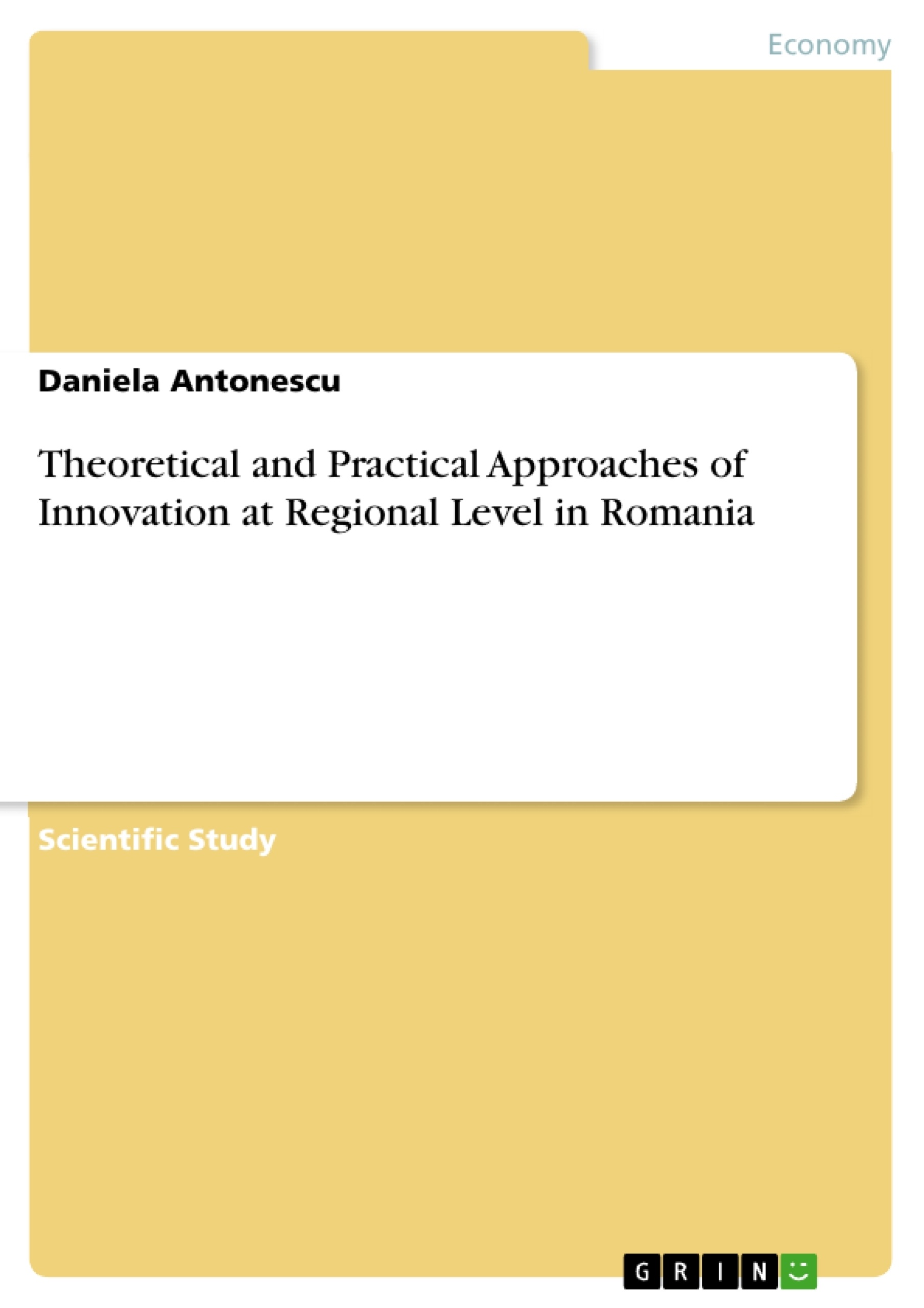During the last period, innovation represented the core topic of a wide number of studies and analyses due to the potential impact it could have on the development level of a country or a region. This aspect is relatively easy to explain: innovation represents an important source of regional/national competitiveness, a modern factor of growth and economic resilience, but also the fundamental objective of the current programming period and of the Europe 2020 Strategy.
According to theory, innovation is a process that takes place predominantly at micro-economic level. Still, its approach at regional level gains increasingly more room within economic approaches starting from the premise that innovative performances of a company depend directly and to a large share on the endogenous local potential, but also on a combination of factors of influence, determined by the specifics and conditions of the area.
The study intends to analyse from the theoretical and practical viewpoint the role of the innovation process within economic development and growth at regional and national level.
Inhaltsverzeichnis (Table of Contents)
- Introduction
- Theoretical and Conceptual Approaches (synthetic)
- Innovation and invention
- Innovation and creativity
- Innovation and design
- Innovation and exploitation
- Innovation and change
- Key-factors of innovation
- Innovation at regional level
- Techniques and methods of innovation evaluation at regional level
- The analysis of the innovation on development regions in Romania
- North West region
- The Centre region
- The North-East region
- The South Muntenia region
- Region Bucharest-Ilfoy
- Region South West
- West region
- Innovation at national level
- Innovation at European Union level
- Innovation and the new features of the programming period 2014-2020
Zielsetzung und Themenschwerpunkte (Objectives and Key Themes)
This study aims to analyze, both theoretically and practically, the role of the innovation process within economic development and growth at regional, national and community level.
- The conceptualization and theoretical underpinnings of innovation
- Key factors influencing the innovation process
- The application and evaluation of innovation at regional level
- Analysis of innovation in Romanian development regions
- The role of innovation in the European Union's cohesion and regional development policies
Zusammenfassung der Kapitel (Chapter Summaries)
The introduction sets the stage by examining the growing interest in innovation at the regional level. It explores the multidisciplinary nature of innovation and its significance in driving economic growth and competitiveness. The chapter also emphasizes the importance of innovation in the context of the Europe 2020 Strategy.
The second chapter delves into theoretical and conceptual approaches to innovation, highlighting the multifaceted nature of the concept and its relationship with key elements like invention, creativity, design, exploitation, and change. It presents diverse definitions and models of innovation from various scholars and organizations, emphasizing the dynamic and evolutionary aspects of the process.
Chapter three focuses on key factors that influence innovation, including human capital, public funding, social culture, copyright regulation, technological infrastructure, and support for new businesses. It analyzes the importance of each factor in fostering innovation and achieving economic growth.
Chapter four examines the role of innovation at the regional level. It discusses the impact of endogenous potential on regional development and highlights the significance of regional innovation systems in attracting and fostering innovation.
Chapter five addresses techniques and methods for evaluating regional innovation, including indicators reflecting regional innovation performance and key factors influencing the innovative potential. It presents a range of indicators used to assess innovation levels, including those related to institutional factors, labor force conditions, regional climate, and financial resources.
Chapter six presents a detailed analysis of innovation in Romanian development regions. It explores the economic structure, innovation performance, key sectors, and challenges faced by each region, providing insights into the strengths, weaknesses, and opportunities for regional development in Romania.
Chapter seven discusses innovation at the national level, outlining the priorities of the National Strategy for Research Development and Innovation 2015-2020. It highlights the importance of public and private investments in RDI, the development of large-scale research infrastructure, and the objective of achieving a critical mass of researchers in the field.
Chapter eight delves into the role of innovation in the European Union's cohesion and regional development policies. It discusses the evolution of EU policies toward innovation, the importance of the Europe 2020 Strategy, and the significance of the Horizon 2020 program in supporting research, innovation, and regional development.
Chapter nine examines the new features of the programming period 2014-2020, emphasizing the increased focus on innovation as a core element of the EU's cohesion policy and the implementation of smart specialization strategies to foster innovation and regional competitiveness.
Schlüsselwörter (Keywords)
The text focuses on innovation as a driver of economic growth and competitiveness, exploring its conceptualization, key influencing factors, evaluation methods, and application at regional, national, and EU levels. Key terms and concepts include innovation, invention, creativity, regional innovation systems, smart specialization, research and development (RDI), European Union cohesion policy, and the Horizon 2020 program.
- Citation du texte
- PhD. Daniela Antonescu (Auteur), 2015, Theoretical and Practical Approaches of Innovation at Regional Level in Romania, Munich, GRIN Verlag, https://www.grin.com/document/312640



